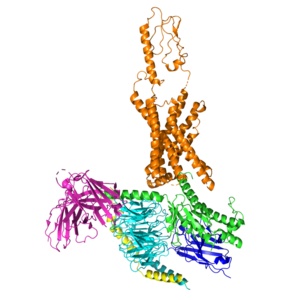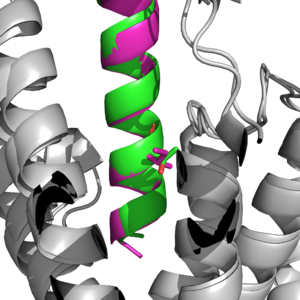User:SaraKathryn Kalkhoff/Sandbox 1
From Proteopedia
IntroductionThe Gastric Inhibitory Polypeptide is a ligand that can be bound to its receptor (GIP-R) to help facilitate the breakdown of glucose. This is the basis of what makes up one of the key ways that glucose is bound and broken down into different parts, including insulin, to be able to maintain blood glucose levels within the body. With this structure, it is also to work with the GLP-1 receptors found within cells to help break down glucose FunctionThe GIP receptor helps facilitate movement of glucose within a cell. [1]. It has a natural ligand that is 42 residues and helps kickstart the GIP-R into firing, as a transporter for glucose in and out of the cell. Once the levels become too high, the ligand TirzepatideTirzepatide has been used as a treatment for Type 2 diabetes. It is used to help treat Type 2 Diabetes, as an agonist to allow insulin to be broken down. This medication is the result of DiseaseDiabetes is a disease that causes Structural highlights
Active SiteMain binding domains between tirzepatide and the GIP receptor would contain an arginine 190 and glutamine 220 residues to facilitate binding of the ligand. One key difference found was a point mutation at position 7 between an Isoleucine and Threonine [1], which would result in a higher affinity for the tirzepatide molecule binding onto the receptor than the ligand. References
Student ContributorsSaraKathryn Kalkhoff Camille Gaudet | ||||||||||||


